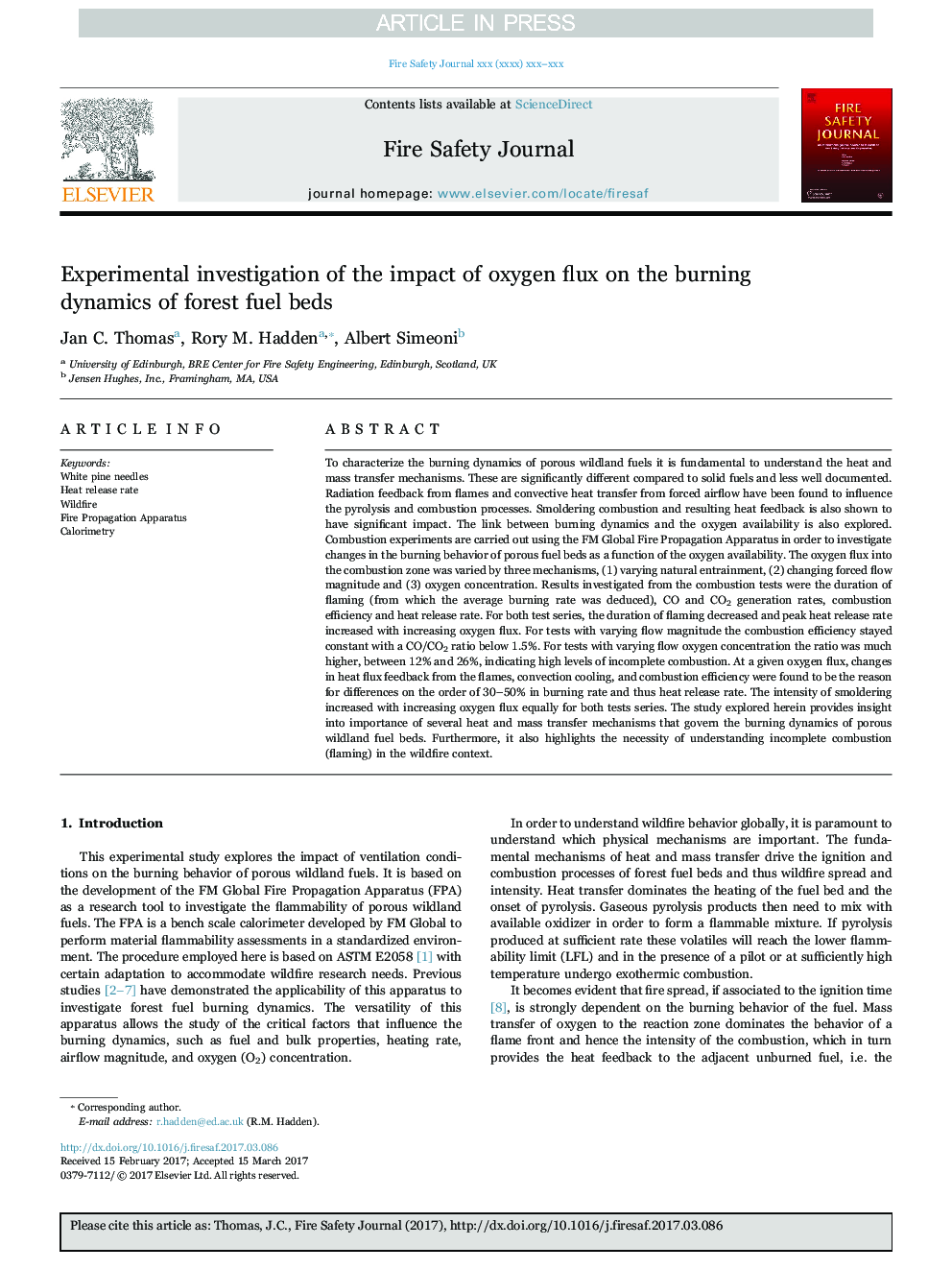| Article ID | Journal | Published Year | Pages | File Type |
|---|---|---|---|---|
| 4920973 | Fire Safety Journal | 2017 | 9 Pages |
Abstract
To characterize the burning dynamics of porous wildland fuels it is fundamental to understand the heat and mass transfer mechanisms. These are significantly different compared to solid fuels and less well documented. Radiation feedback from flames and convective heat transfer from forced airflow have been found to influence the pyrolysis and combustion processes. Smoldering combustion and resulting heat feedback is also shown to have significant impact. The link between burning dynamics and the oxygen availability is also explored. Combustion experiments are carried out using the FM Global Fire Propagation Apparatus in order to investigate changes in the burning behavior of porous fuel beds as a function of the oxygen availability. The oxygen flux into the combustion zone was varied by three mechanisms, (1) varying natural entrainment, (2) changing forced flow magnitude and (3) oxygen concentration. Results investigated from the combustion tests were the duration of flaming (from which the average burning rate was deduced), CO and CO2 generation rates, combustion efficiency and heat release rate. For both test series, the duration of flaming decreased and peak heat release rate increased with increasing oxygen flux. For tests with varying flow magnitude the combustion efficiency stayed constant with a CO/CO2 ratio below 1.5%. For tests with varying flow oxygen concentration the ratio was much higher, between 12% and 26%, indicating high levels of incomplete combustion. At a given oxygen flux, changes in heat flux feedback from the flames, convection cooling, and combustion efficiency were found to be the reason for differences on the order of 30-50% in burning rate and thus heat release rate. The intensity of smoldering increased with increasing oxygen flux equally for both tests series. The study explored herein provides insight into importance of several heat and mass transfer mechanisms that govern the burning dynamics of porous wildland fuel beds. Furthermore, it also highlights the necessity of understanding incomplete combustion (flaming) in the wildfire context.
Related Topics
Physical Sciences and Engineering
Engineering
Civil and Structural Engineering
Authors
Jan C. Thomas, Rory M. Hadden, Albert Simeoni,
